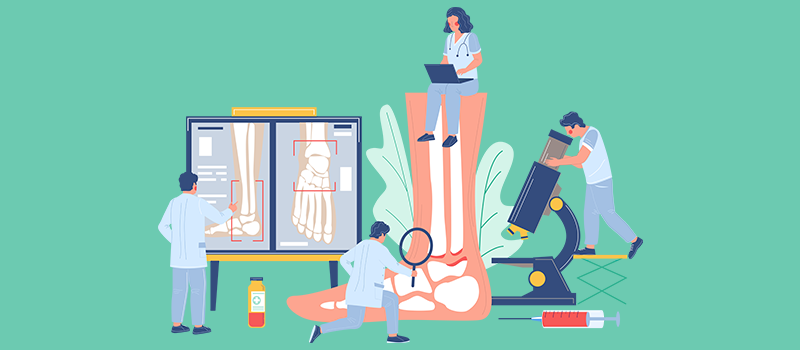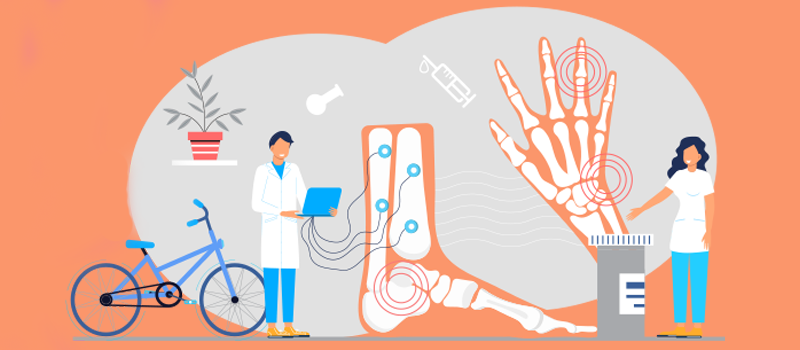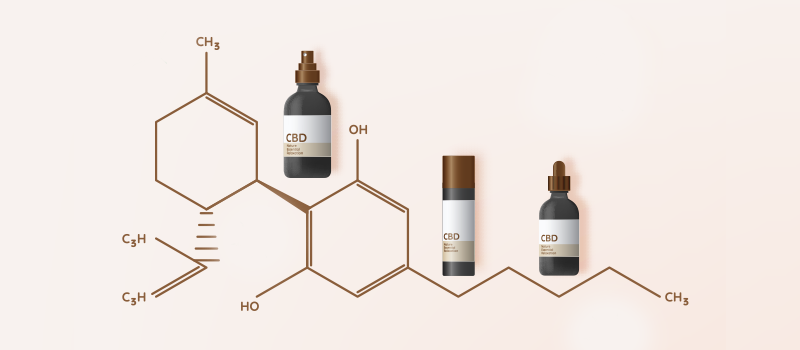What’s the Buzz
The Bee Healthy Blog
Understanding Occupational Therapy vs Physical Therapy

-
Occupational therapy (OT) focuses on helping people with injuries, illnesses, or disabilities learn necessary skills while physical therapy (PT) focuses on improving mobility, strength, and flexibility after illnesses, trauma, or medical procedures.
-
Occupational therapists (OTs) assist patients with a wide range of day-to-day tasks such as eating, bathing, or getting dressed (and much more), regardless of the health condition, injury, or trauma that may have affected their skills.
-
Physical therapists (PTs) treat conditions, injuries, or trauma that cause reduced mobility, pain, and movement problems, helping patients reduce pain, regain strength, and increase flexibility after surgeries, trauma, or neurological conditions such as Parkinson's disease.
Occupational Therapy vs Physical Therapy Overview
Definition of Occupational Therapy
Occupational therapy (OT) focuses on helping people with injuries, illnesses, or disabilities learn the skills necessary to do everyday tasks for self-care and live independently, as they did prior to their health condition.
Definition of Physical Therapy
Physical therapy (PT) focuses on improving mobility, strength, and flexibility and reducing pain after illnesses, trauma, or medical procedures with the goal of improving quality of life.
What is the Main Difference Between Physiotherapy and Occupational Therapy?
The main difference is that physiotherapy is aimed at mobility, strength, and range of motion. Occupational therapy (OT) works on motor skills to promote independence in activities of everyday life. Together, PT and OT can treat the whole person and improve their well-being and quality of life.
Goals of Occupational Therapy
The main goal of occupational therapy is to assist a person in completing activities of daily living (ADL). This is achieved by improving gross motor skills and fine motor skills that are needed to perform specific activities during everyday living. The occupational therapist also optimizes a person’s home and/or work environment to facilitate day-to-day tasks. The aim is to help the patient:
-
Maximize their capacity to perform a variety of daily tasks safely and efficiently.
-
Promote independence and productivity.
-
Teach caregivers and family members how to support the client’s participation in OT.
Goals of Physical Therapy
The main goal of physical therapy is to improve a person's mobility, range of motion, and function. This is achieved through various physical activities, stretches, and exercises carried out under the guidance of a qualified physical therapist. The aim is to help the patient:
-
Regain or improve range of motion and flexibility.
-
Improve strength and mobility.
-
Lessen musculoskeletal pain.
-
Prevent the progression of a condition or impairment.
-
Provide insights on techniques to maintain overall functionality.
-
Improve fitness through the use of state-of-the-art exercise equipment.
Conditions Treated by Occupational Therapy
Occupational therapists (OTs) frequently treat conditions that limit an individual’s ability to accomplish everyday tasks, For example, OT may be a part of the treatment plan for:
-
Recovery from sports injuries.
-
Post-surgical care.
-
Chronic pain management.
-
Psychological problems, such as anxiety and depression.
-
Intellectual or developmental delays, learning disorders, and autism spectrum disorder (ASD).
-
Hand problems, such as trigger finger and carpal tunnel syndrome.
-
Joint problems, such as rheumatoid arthritis and osteoarthritis.
-
Neurological conditions, such as stroke, cerebral palsy, and multiple sclerosis.
Conditions Treated by Physical Therapy
Physical therapists (PTs) frequently treat conditions in which an individual's mobility or range of motion is restricted. For example, PT may be part of the treatment plan for:
-
Reduced mobility due to injuries or trauma.
-
Post-surgical recovery.
-
Pain management.
-
Joint problems, such as ankylosing spondylitis, osteoarthritis, and rheumatoid arthritis.
-
Heart problems, including heart failure and recovery from a heart attack.
-
Lung problems, such as chronic obstructive pulmonary disease (COPD) and cystic fibrosis.
-
Neurological problems, such as mental health conditions, stroke recovery, movement disorders like Parkinson's disease, and multiple sclerosis.
-
Hand problems, such as trigger finger and carpal tunnel syndrome.
-
Urinary incontinence.
Treatment Approaches and Techniques
Both occupational therapy and physical therapy are types of rehabilitative care. But a key difference between occupational therapy and physical therapy is in the approach and techniques used.
Occupational Therapy Treatment Approaches and Techniques
Your occupational therapist will carefully review your medical history and current health status. Based on this evaluation, they will develop a personalized therapy plan for you, including specific objectives to help you achieve your recovery goals. Some of the elements that may be included in your OT plan are:
-
Learning or relearning activities of everyday life like eating, bathing, and dressing.
-
Assessing your home and workplace to simplify daily tasks
-
Using mobility devices, such as walkers, canes, crutches, or wheelchairs.
-
Learning fine motor skills and eye-hand coordination to perform activities such as buttoning a shirt or writing.
-
Learning safe methods of getting in and out of chairs, beds, and bathtubs.
-
Doing exercises to reduce pain and improve flexibility and pain-free movement.
-
Programs to support a successful return to work.
-
Techniques for handling mental stress.
-
Teaching family members and caregivers to assist with daily activities.
Physical Therapy Treatment Approaches and Techniques
The type of physical therapy is based on specific needs. Your physical therapist will conduct a comprehensive evaluation of your medical history and current health status and create a customized treatment plan and goals. Generally speaking, PTs focus on treatment methods such as:
-
Electrical stimulation.
-
Massage.
-
Application of hot and cold.
-
Hands-on manipulation.
-
Stretching.
-
Targeted exercises.
Roles and Responsibilities
What Occupational Therapists Do
Occupational therapists help people with a variety of conditions live more independently. They help you relearn, recover, or maintain skills for daily living and working. Your occupational therapist will:
-
Identify your strengths and difficulties with everyday tasks, such as getting dressed or cooking meals.
-
Find practical solutions to address your difficulties by using your strengths.
-
Plan treatment programs to teach you how to use adaptive equipment.
-
Take a holistic (whole-person) approach, considering the environmental, physical, and emotional aspects of your life.
-
Work with your family and other healthcare professionals to help you achieve your goals.
What Physical Therapists Do
Physical therapists help people with a variety of conditions improve movement and manage pain. They help you regain pain-free movement after injuries, surgery, or other health conditions. Your physical therapist will:
-
Assess your status, design a treatment plan, and evaluate and record your progress.
-
Teach you exercises to do at home to improve your movement and physical function.
-
Use physical stimuli such as heat, cold, massage, ultrasound, or electrical stimulation to help you achieve your goals.
-
Manage pain and chronic conditions without prescription drugs or surgery.
-
Help you regain or maintain independence and lead an active life.
Educational Requirements and Job Outlook for PT and OT Specialties
Education for Occupational Therapists
Occupational therapists have a professional doctorate (OTD or Occupational Therapy Doctorate) or obtain a master’s degree at graduate school. They are certified by the National Board for Certification in Occupational Therapy (NBCOT). Additionally, certain states require licensure. The American Occupational Therapy Association (AOTA) has more information on becoming an occupational therapist or occupational therapist assistant.
Education for Physical Therapists
After a bachelor’s degree, physical therapists receive a post-baccalaureate physical therapy degree (Doctor of Physical Therapy or DPT) (program accredited by the Commission on Accreditation in Physical Therapy Education or CAPTE). PTs must also pass the National Physical Therapy Exam (NPTE), known as the board.
Work Settings
Occupational therapists work in the following types of facilities:
-
Offices or clinics for outpatients
-
Inpatient care facilities, including nursing homes and hospitals
-
Schools
-
Mental health facilities
-
Home healthcare organizations
Physical therapists are employed in settings, such as:
-
Fitness centers
-
Schools
-
Home health agencies
-
Private practice outpatient clinics or medical offices
-
Hospitals
-
Nursing homes
Career Opportunities
The career paths of PTs and OTs are similar. Both are healthcare professionals and movement experts who receive education and training in health sciences and kinesiology (the study of movement).
According to the Bureau of Labor Statistics, the median pay for both occupational and physical therapy graduates is between $95,000 to $100,000 per year and these occupations are growing at a rate of 10-15%.
Benefits of Each Therapy
Benefits of Occupational Therapy
Receiving occupational therapy can result in improved:
-
Fine motor skills, for example, grasping objects, handwriting, and computer skills.
-
Hand-eye coordination, such as playing a musical instrument.
-
Basic life skills, such as bathing, dressing, brushing your teeth, cooking, and eating.
-
Social skills and positive behaviors, such as managing anger or frustration.
-
Independence across various aspects of life.
-
Balance and muscle strengthening for fall prevention.
Benefits of Physical Therapy
Receiving physical therapy can have the following benefits:
-
Pain management without the use of drugs such as opioids, which carry serious risks.
-
Improved mobility, strength, flexibility, and range of motion, to help you move more safely and confidently.
-
Recovery from injuries, including sports and workplace injuries.
-
Recovery after surgery with post-surgical rehabilitation.
-
Recovery from stroke to help you regain function, balance, and gait.
-
Management of pelvic floor dysfunction, which can cause urine leakage and other issues.
-
Fall prevention and other age-related medical issues.
Key Similarities Between PT and OT
Although occupational and physical therapy have distinct differences, they also share some similarities, namely:
-
Overall purpose: Both OT and PT enhance a patient’s quality of life and overall functioning and help to maintain health and wellness.
-
Conditions: The health conditions that require the use of both PT and OT have a significant overlap.
-
Design: Both PT and OT involve individualized, hands-on attention.
-
Tasks: Occasional overlap may occur among the tasks involved. Occupational therapists may instruct clients in stretches or exercises, for instance. Physical therapists might instruct clients on movements that facilitate daily tasks, like entering and exiting a bathtub.
-
Goals and monitoring: Both forms of therapy establish objectives and evaluate the individual's progress toward those objectives.
FAQ: Choosing Between Occupational Therapy and Physical Therapy
Which is Better: Occupational Therapy or Physical Therapy?
Occupational therapy vs physical therapy, the choice depends on your condition and therapy goals.
For example, if you have trouble walking or moving a body part without pain, you might benefit from working with a physical therapist. They can help you improve your mobility, strength, and range of motion while alleviating pain through stretches, targeted exercises, and other techniques.
If you have trouble performing routine activities like getting dressed or picking up objects without dropping them, you might benefit from working with an occupational therapist. They can help you learn the motor skills necessary to perform these tasks independently.
If you still don’t know what type of therapy you need, your primary care provider can guide you on physical therapy vs occupational therapy. It might be that you can benefit from treatment plans developed by both physical and occupational therapists.
What is an Example of Occupational Therapy?
An example of occupational therapy is a stroke survivor or a person with brain injuries working with an occupational therapist to relearn activities of daily living, such as dressing themselves or using utensils to eat. The OT may also make modifications in the person’s home, for example, by installing a grab bar in the shower to ensure safe, independent bathing.
What is an Example of Physical Therapy?
An example of physical therapy is physical rehabilitation for a person who has recently undergone knee replacement surgery. They might work with a physical therapist during their recovery to regain mobility, improve range of motion, and strengthen the knee joint. This might include the use of assistive devices such as a walker or cane to improve patient’s ability to move safely. The goal would be to facilitate safe mobility while reducing pain and discomfort in the post-surgical period.
Who Needs Occupational Therapy?
People who have problems with completing activities of daily living independently may need occupational therapy. This includes daily activities such as eating, bathing, and dressing; using adaptive equipment such as shower chairs; and training for caregivers and family members to ensure a person’s safety and comfort and promote independence.
Who Needs Physical Therapy?
People with injuries, chronic pain, cardiovascular disease, respiratory conditions, neurological disorders, and developmental problems may need physical therapy, as well as those in need of physical rehabilitation after surgery.












SOCIAL